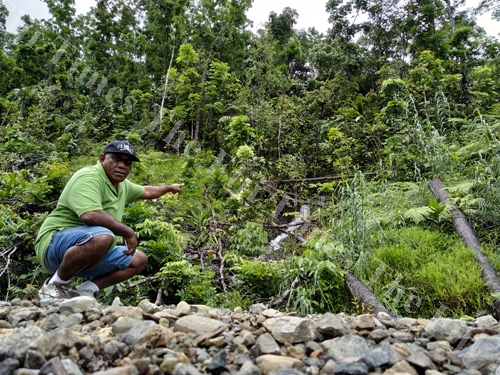A LANDOWNING clan is seeking $2.5 million in compensation from Energy Fiji Ltd (EFL) for the cutting of 625 trees, mainly mahogany, on 5.2 hectares of land within native reserve.
The clan Nareba Nakorowaiwai of Dranikula Village in Galoa is upset with EFL for not following the procedure to clear way for concrete power posts to support electrical wires for about 4.5km through their land to the beneficiaries of the project. The clan is among four different landowning units along the grid that EFL wants to develop.
Pauliasi Tuiwai, who is the consultant for the Nareba clan, said consent of landowners was paramount because the cutting of trees would affect the surrounding environment and the source of income for future members of the clan.
“They never got the consent of 60 per cent of the mataqali for the development on native reserve. They just went ahead and cleared 5.2 hectares, cutting down trees.”
Mr Tuiwai claimed the activity carried out by EFL contractors was unauthorised and therefore, they were claiming damages for their mahogany and other trees that were cut. Mr Tuiwai claims EFL failed to:
- Obtain the consent of landowners and support letters from the provincial office and administrator to iTLTB;
- Carry out, and have approved, an environmental impact assessment (EIA) study;
- Make a map plan to demarcate the boundary of operation;
- Make a pre-harvest inventory; n Obtain consent from TLTB or Forestry Department; and
- Obtain the right licence to fell.
Mr Tuiwai said the compensation claim by the clan was in the form of damages to individual members of the clan who would be deprived of their sources of food, water and changes in the eco-system of their food sources such as vegetation.
He said the compensation claim did not include environmental damage penalty for breach of the Environment Management Act (2005) and EIA Process Regulations 2007.






